Tomorrow's Triumph? Mitsubishi Motors Reinventing Itself, Making Moves
Watching Mitsubishi return from death’s door has been less exciting than the first part of this sentence makes it sound. Part of that stems from the automaker’s position as a multinational corporation that has lost its way and not some down-on-his-luck boxer you’re supposed to be rooting for in a movie. Even if you were inclined to clap for corporate comebacks, Mitsubishi hasn’t earned its standing ovation just yet.
While the brand’s U.S. sales have improved every year since 2013, progress has been gradual. Last year, Mitsubishi moved 118,074 autos inside America — the best it has managed since before the Great Recession, but nowhere near its 2002 high of 345,915 deliveries. That might paint the situation a bit darker than it actually is, however.
Mitsubishi has actually managed to retain customers in China far better than it could in the U.S. and its European sales are higher than they’ve ever been. The Japanese firm also has a strong footprint in numerous developing markets around the world. But North America has historically been an extremely important market for Mitsubishi, and it wants its market share back, so it’s making some additional changes.
Rare Rides: A 1987 Dodge Raider, Lil' Red Montero Sibling
Today’s Rare Ride is the rarely seen Dodge version of Mitsubishi’s most famous off-road SUV. It’s a Raider, from 1987.
Rare Rides: The 1989 Mitsubishi Sigma - Excellent Parts Availability Guaranteed
Luxury, elegance, Mitsubishi: Three words that sound just right in a singular sentence. Similarly, one sedan expresses all three of those words in a magnificent way. It’s a very rarely seen Mitsubishi Sigma, from 1989.
Buy/Drive/Burn: Three-door Japanese SUVs in 1989
Do you remember what the compact SUV market looked like in 1989? Me either. But it was a time where every Japanese manufacturer (except Honda, obviously) offered a three-door SUV. Nissan, Mitsubishi, and Isuzu all vie for your 1989 dollars.
Mitsubishi Lancer Evolution Could Make a Comeback With Help From Renault
Lancer Evolution vs WRX STi had been as classic a rivalry as Mustang vs Camaro. But, with the departure of the Evo in 2016, there has been a hole in the marketplace and in the hearts of enthusiasts. Reports coming out of Autocar point to a revival of the famed rivalry, with an theoretical Evo XI getting some help from Renault.
While the Evolution name has been rumored to be revived in the form of some sort of SUV or electric vehicle — or both — the Lancer Evolution may yet return in proper super-sedan form. While details are spotty, it is speculated that the engine would come from the next-generation Renault Mégane RS. The current Mégane RS is the front-wheel drive Nürburgring production vehicle record holder, sporting a 296 horsepower and 295 ft-lbs 1.8-liter, 4-cylinder engine. With the next-generation engine anticipated to displace 2.0-liters, it may utilize a bit of electric boosting from a 48V mild-hybrid system to close in on the 341 hp coming from Subaru’s WRX STi S209.
2019 Mitsubishi Eclipse Cross SEL S-AWC Review - It's Safe to Stare
“Those who cannot remember the past are condemned to repeat it.” That adage, from George Santayana, has a less well-known corollary that I just made up: “Those who do remember the past are doomed to watch idly while our memories are sold out to create something much, much worse.”
Take the 2019 Mitsubishi Eclipse Cross seen here. When Mitsubishi dusted off a beloved sports car nameplate to slap on YET ANOTHER CROSSOVER, enthusiasts everywhere started screaming. Their memories of late-night cruising and loud exhausts were being trampled by another jacked-up hatchback with no sporting pretense.
Yes, I was one of those enthusiasts hating the name. But then I drove the car, and I recalled that the target Eclipse Cross buyer probably doesn’t remember that not-too-distant past where the stylish Diamond Star coupes ruled the streets, and they’ll simply buy on merit, not memories.
2018 Mitsubishi Outlander PHEV Review - The Waiting Was the Hardest Part
The idea was as obvious as it was brilliant. Take the hottest segment of motor vehicles on the market and stick an improbably high fuel economy figure on the window sticker. The hybrid revolution made the ungainly Prius a certified success — so why not a crossover? And why not add a plug to it, letting it run on battery power for a longer distance?
In 2013, Mitsubishi did just that, only overseas. Americans would have to wait.
Finally, the 2018 model year brought the Mitsubishi Outlander PHEV to stateside showrooms. Boasting around 22 miles of all-electric driving range, this plug-in hybrid crossover could meet many drivers’ commuting needs without using a drop of fuel. Was it worth the wait?
TTAC Staff Thoughts on the Best and Worst Cars of 2018
A little over a month ago, we ran the results of our best/ worst cars of 2018 poll. At the end of each post, I reflected a bit on the results, but I wanted to dig a bit deeper.
While I had hoped to do this a bit sooner, other work got in the way. So Steph and I decided it would be a good way to close out the year.
2018 Mitsubishi Outlander Sport Review - In the Shadows
Crossovers are the future. As much as I hate to say it, more and more buyers vote with their wallets every year, choosing a smaller-yet-taller, less fuel-efficient alternative to the traditional sedan. Automakers would build nothing but brown, diesel, manual station wagons if buyers would buy them — so you can’t fault the manufacturers for tossing every possible permutation of the CUV as chum for the always-hungry shopper.
Mitsubishi is no different. Of the four distinct models it offers here in the States, three are crossovers. But which one is right for you? Today, we look at the 2018 Mitsubishi Outlander Sport, the smallest of the trio. Is it distinct enough to be worthy of your driveway?
Here Are TTAC Readers' Choice for Worst Vehicles of 2018
There are those vehicles that are truly great. You love to look at them, to drive them (or dream of so doing), to buy them.
Then there are the worst. The stinkers. The overpriced, the ugly, the awful-to-drive, the cars and trucks that just don’t make sense.
PHEV Is Fine: Mitsubishi Says It Knows What Green Buyers Want
While the brand name inspires more than a few snorts of derision and jokes in North America, Mitsubishi, now backed by the mighty Renault-Nissan Alliance, carries greater clout overseas. The automaker’s Outlander PHEV outsells all other plug-in hybrids in the UK, and global sales of the brand’s vehicles are on the upswing.
Being a part of the alliance means Mitsu will soon have its hands on new architecture, but the brand claims it isn’t about to go all snobby with a line of dedicated electric car models. Sure, there’ll be EVs in the future, but they won’t be standalone models. The automaker claims the technology it’s most known for — plug-in hybrid powertrains — remains the best bet for most consumers, and that’s why it plans to focus mainly on PHEV.
Also, you really won’t need an EV if you buy the next-generation Outlander PHEV, claims Mitsubishi strategy boss Vincent Cobee.
Buy/Drive/Burn: Forgotten Japanese Compacts From 1988
They’ve got two doors, sporty intentions, and names people forgot long ago. Today we cover three oddball offerings from the latter part of the 1980s.
Will you take home the Nissan, the Mitsubishi, or the Subaru?
Buy/Drive/Burn: The Japanese Family Wagons of 1995
On the last installment of Buy/Drive/Burn, we chose from three family-friendly luxury wagons from the Malaise year of 1975. Several members of the B&B peanut gallery quickly retorted that all three options were awful, and that only wagons from the 1990s were worth pondering.
Bam. We’re back on wagons, 20 years later. It’s now 1995.
Eternal Underdog: Mitsubishi May Not Sell Enough Cars in the U.S. to Worry About Tariffs
While still an industrial giant on the global scene, Mitsubishi is a shadow of its former self in the United States. After leaning a bit too hard on its status as a value brand, annual deliveries went from about 346,000 units to just 58,000 between 2002 and 2012. Meaningful progress has been made since then, but the road to redemption has been a hard one.
The looming threat of tariffs isn’t making things any easier for Mitsubishi. The automaker doesn’t have a single production facility in the U.S., meaning it will receive the full force of whatever percentage is tacked onto the import fee. There is hope, however. Bizarrely, the brand’s biggest weakness (U.S. sales) is also its greatest strength when it comes to enduring import tariffs.
QOTD: What's Your Favorite Automotive Outcast?
Yesterday, we featured an edition of Buy/Drive/Burn pitting three excellent Japanese sports cars against one another. All three were prime time, heavy hitters in their segment, and all three are remembered fondly for various reasons by the Internet Car People.
But some people thought there was a fly in the ointment — a big one. Hence today’s question.
Cure for the Common Mitsubishi? Brand Hires Former Audi and Alfa Designer
There’s no denying that every last TTACer looked at the Mitsubishi Eclipse Cross with a raised eyebrow. Not the intrigued kind, either. While the compact crossover’s design can certainly be called polarizing, an easy consensus existed in this chat room. Try again, basically.
As the resurgent Mitsubishi brand awaits new models build with help from its Renault-Nissan Alliance partners, a new addition to the team is ready to help sculpt those future vehicles.
Mitsubishi Mirage May Become Brand's Next Crossover Vehicle
Having already bastardized the Eclipse name by affixing it to a new crossover vehicle, there’s palpable fear within the automotive media that Mitsubishi might try the same with another iconic property. While FTO and 3000GT don’t have the right ring to them, we can imagine trendy performance SUV wearing an Evolution badge — to our chagrin.
In our fantasies, we imagine Mitsubishi bringing back a new, harder-hitting Lancer compact and a menacing mid-sized Galant. Maybe the Starion could even make an appearance. However, those models probably wouldn’t sell outside the Land of Make Believe even if they were stellar models. Sport utility vehicles and crossovers are where the money’s at right now, and cash is exactly what Mitsubishi is after.
Keeping that in mind, a new rumor claims the brand is working with Nissan to get its Alliance partner’s modular platform inside the Mirage, or whatever replaces it. The end result will be a small crossover with sporting pretensions, which doesn’t sound bad in the least.
It'll Take More Than a Dealership Makeover to Propel Mitsubishi Upmarket
At the end of the day, brand perception comes down to product, but no one likes visiting a dingy dealership. As the once-endangered Mitsubishi awaits a slew of lucrative new products (crafted with Nissan’s help), it figures it may as well begin sprucing up its dealer presence — not just in the U.S., but worldwide.
While the automaker’s U.S. division sits back and basks in the glow of June’s 46.2 percent year-over-year sale increase, head office is busy planning 5,000 renovations.
Junkyard Find: 1995 Dodge Stealth R/T
Chrysler started selling Dodge-badged Mitsubishis all the way back in 1970, then built plenty of Mitsubishi products in North America under the Diamond-Star Motors flag later on. The Mitsubishi GTO (sold as the Mitsubishi 3000GT and Dodge Stealth on this side of the Pacific) was built in Aichi Prefecture, Japan, and was one of the more interesting sports cars of the 1990s.
Here’s a 1995 Stealth R/T, photographed in a San Francisco Bay Area self-service wrecking yard.
2018 Mitsubishi Outlander 3.0 GT S-AWC Review - Not Bad*
Car enthusiasts love to argue about cars, and will debate generally anything related to the topic ad nauseum. My wife knows not to talk cars with me unless she’s prepared to engage in an multi-hour discussion with outlines, Powerpoints, and 8×10 glossy photos. Discussions like these have birthed countless internet forums and blogs, including the usually brilliant comment section here at TTAC.
A common topic: are there any truly BAD cars anymore? We may all hate various brands or models because of poor prior experiences, but it can generally be assumed that all cars sold new in the U.S. can at least perform the basic function of a car satisfactorily for roughly the length of the factory warranty.
*Does it move sentient bags of meat from one place to another without parts falling off? Then it qualifies as NOT BAD.
Through that lens, then, we can look at the 2018 Mitsubishi Outlander. It’s not a bad looking vehicle, and it certainly does what it’s supposed to. Broaden the view a bit, however, and it’s clear that there are few compelling reasons to buy Mitsubishi’s biggest crossover.
Junkyard Find: 1998 Eagle Talon
While assembling my website pages with links to every Eagle and Mitsubishi car I have ever photographed in wrecking yards, I learned something troubling: I had never shot an Eagle Talon. Sure, there was this Plymouth Laser Turbo and this much never Mitsubishi Eclipse, but no examples of the Eagle Division’s most beloved — well, only— sports coupe.
I resolved that I’d shoot the next Talon I spotted in a wrecking yard; that car turned out to be this one in Denver, from the final model year of Eagle.
Image Makeover Won't Be Easy, Says Mitsubishi's North American Boss, but at Least People Are Buying Its Cars
Mitsubishi North America CEO Fred Diaz knows people think of his company as a purveyor of vehicles with a singular appeal: their affordability. The flip side of the coin is that people think the brand’s lineup is cheap, in the negative sense. Something must be done.
The regional boss of the automaker with the saddest Detroit auto show display knows that stigmas aren’t erased overnight. But he’s got ideas on how to turn things around. In the meantime, Americans are going out and purchasing ever greater numbers of the company’s cars. Especially last month.
Junkyard Find: 2002 Mitsubishi Lancer OZ Rally Edition
Hunting for interesting junkyard Mitsubishis has become more difficult during the last five years or so, as the Cordias, Tredias, and Sigmas have mostly disappeared, leaving endless fleet-spec 21st-century Galants and Outlanders plus the occasional weird Chryslerbishi.
One of the few bright spots is the Mitsubishi Lancer OZ Rally Edition, an econo-commuter that looked quick but had a tough time catching Tercel EZs. Here’s one in a Phoenix self-service yard.
2018 Mitsubishi Outlander Sport 2.4 SEL AWC Review - Cheap and Value Aren't the Same Thing
There are some vehicles on the market that offer bargain pricing without punishing their buyers.
The Mitsubishi Outlander Sport 2.4 SEL AWC isn’t one of those.
Mitsubishi has seemingly been in “barely getting by mode” for years now, and the Outlander gives a clue as to why.
Mitsubishi Lancer to Return, but Forget About a Sedan
Mitsubishi raised the hackles of former Eclipse owners by naming its latest crossover — the Eclipse Cross — after the defunct sporty coupe. It now seems prepared to do the same to current Lancer owners.
The automaker claims there’s a new Lancer on the way, but it won’t be the same Lancer you fondly recall from years past. The market simply won’t support a traditional sedan or hatch anymore, the brand’s chief operating officer says — at least not with the kind of volume Mitsubishi desires.
No, this new vehicle will straddle the already blurred boundaries between a hatchback and a crossover. Excited yet?
More Dealers, Lease Products Coming to Mitsubishi, but No Pickups Just Yet
Now part of an alliance with cash and platforms to toss around, Mitsubishi’s growing bolder in its quest to remind buyers that it’s not about to disappear from the American automotive landscape. Buyers, of course, are already helping the brand regain its footing. February’s U.S. sales were the highest since the heady and ominous year of 2007 (up 18.8 percent, year over year).
Through the end of February, U.S. sales are up 23.4 percent over the same period in 2017.
Having crawled out of the five-figure sales number nightmare that plagued the brand over the past decade, Mitsubishi dealers met in Las Vegas recently to discuss the near future. Some requests were granted, but a long-standing demand went unfulfilled.
Buy/Drive/Burn: Oddball Semi-premium SUVs From 1998
The Buy/Drive/Burn series has been stuck in a time warp lately. After tackling domestic minivans from 1994 with luxury appointments, we moved on to 1997 and some nontraditional imported minivans.
Once again, we’re going to keep it in the ’90s and determine which of three imported, alternative semi-luxury SUVs should burn at the stake. Are you ready for gold badges and two-tone? Rhetorical question.
Moving From Mitsubishi's Outlander Sport to the Smaller-engined Eclipse Cross Won't Pay Off At the Pumps
One’s an ancient model that continues to sell in significant numbers; the other’s a fairly radically styled new model in the same compact crossover segment. Together, the Outlander Sport (RVR in Canada) and Eclipse Cross make up two-thirds of Mitsubishi’s utility vehicle lineup.
It seems these two rivalrous siblings — separated by $2,900 and a host of powertrain differences — will share the same segment for some time to come, as there currently isn’t a next-generation Outlander Sport in the pipe. We might wait nearly three years before one appears. In the meantime, anyone willing to shell out less dough for a two-row Outlander Sport can expect to save cash on gasoline, as well.
It may have the smaller engine of the two, the Eclipse Cross has the greatest thirst.
2019 Mitsubishi Outlander PHEV: Stealthy Plug-in Due for a Power Boost
Unlike the ad campaign you’ve no doubt seen for the new Eclipse Cross crossover, Mitsubishi’s long-awaited Outlander PHEV plug-in arrived on North American shores with little fanfare. Outlander PHEV sales quietly kicked off in January, years after its overseas debut.
Even though it’s just arrived, news from the Geneva Motor Show tells us there’s changes afoot for Mitsubishi’s sole green model. More grunt is on the way.
Mitsubishi Motors Is Gearing Up to Finally Get Its Act Together
Poor Mitsubishi. Its strange history has ushered in memorable models, an important alliance with Chrysler, success on the World Rally stage, a partnership with Jackie Chan, an epic fuel economy scandal, and building debt that eventually turned it into the sad creature we know today. But there is nothing to say it has to stay mired in that ugly situation. It’s getting ready to crawl out of the dumpster and will be getting plenty of help along the way.
The Renault-Nissan Alliance, which now includes Mitsubishi Motors, announced a reformatting of its executive lineup on Thursday — adding new areas, such as quality and car servicing, where all three companies will work in tandem. Bent on efficiency savings, the Alliance said it will seek to extend its convergence in the areas of purchasing, engineering, manufacturing and supply chains next month (when Mitsubishi also gets its new CEO for North America). The ultimate goal here is to maximize profits that can then used for advanced research and development.
Where does this leave Mitsubishi? In a much better position than it once was. Despite initial concerns that Renault and Nissan would attempt to relegate the brand to Asia, where it’s strongest, the Alliance opted to improve the company’s U.S. dealership network and grow sales by 30 percent to 130,000 units per year.
New CEO Named for Mitsubishi North America
Fred Diaz, who once headed the Ram brand before Nissan tapped him to lead the company’s truck division, has been put in charge of Mitsubishi’s North American operations.
While I’d love to run a headline saying something to the effect of “Mitsu Raids Corporate Cupboard for a New Raider,” I think the chances of a full-sized, badge-engineered Diamond Star pickup are somewhere between nil and nada, no matter the background of the brand’s new CEO.
Ghosn Promises to Make Nissan-Renault Alliance 'Irreversible'
Carlos Ghosn is pledging to solidify the alliance between Renault, Nissan, and Mitsubishi Motors after agreeing to stay on as the French automaker’s chairman and CEO for the next four years. He also announced the companies will take the next few weeks to develop a plan to “make the alliance irreversible.”
While we’d love to hear about an automotive blood pact or — better still — a strategy to clone Ghosn for the next hundred years, the final plan will probably be a little more mundane. But, according to the chairman’s Friday announcement, it will not include a merger — at least not until the French government gets out of the way.
Attention, Cheapskates: Here Are the Most Affordable Cars to Own in Every Segment
There are few things sweeter in life than bragging to your friends and family about the good deal you just negotiated on a new car. They certainly won’t care, but the amount of self-satisfaction received from reminding yourself that you are a force to be reckoned with at the dealership is immeasurable.
Of course, the bargain in the driveway can turn into a money pit once you calculate all the costs associated with vehicle ownership. Fuel costs, financing, insurance, and depreciation can all add up — especially if you purchased the wrong model. So what’s a thrift-obsessed shopper to do, calculate the total cost of ownership on every model in every segment over a five-year period to determine which is the best value overall?
Don’t be ridiculous, someone has already done that.
Mitsubishi's Still Hot on Trucks, but Man, That Outlander Sport's Gonna Get Old
As we’ve told you before, Mitsubishi’s acceptance into the massive Renault-Nissan fold spells new opportunities for the struggling brand. Platform and technology sharing, affordably developed new models, no further risk of bankruptcy — the future looks a lot brighter than it did just a couple of years ago.
Among those potential new products is a pickup truck — a segment Mitsu’s courted in the past, with varying degrees of success. Apparently, the brand’s urge to join the growing pickup field hasn’t waned, but the timeline for another new product — a downsized Outlander Sport — now appears less urgent than it once did.
Nissan, Renault, Mitsubishi Hunting for Robo-taxi Deals With Tech Companies
The alliance consisting of Nissan, Renault, and Mitsubishi Motors is currently searching for partners for a plunge into the robo-taxi business. While chairman Carlos Ghosn claims mobility will never replace traditional ownership, he acknowledges the need to explore other avenues to remain competitive.
“A lot of people think this is substitution. It’s not — it’s addition,” Ghosn said in November. “The traditional business of building cars and selling cars and owning cars is going to continue.”
However, the supplemental businesses aren’t going off half-cocked. Ogi Redzic, Alliance senior vice president, has said he’s personally overseeing about 1,000 employees tasked with developing connectivity services for the automotive group and intends to announce the partners for the new autonomous cab service in the coming months.
QOTD: What's Your Favorite Diamond-Star Motors Crapwagon?
Earlier this week in TTAC’s always entertaining Slack chat, Adam Tonge suggested (without sarcasm) how the B&B might enjoy discussing the market entrants of the Diamond-Star Motors company and picking favorites. Shortly after this discussion, the very DSM Plymouth Laser we saw in yesterday’s Rare Rides fell right in my lap, and this all seemed like destiny.
Of the varied selection, which Diamond-Star Motors vehicle is your favorite?
Still Hot After All These Years: Not Every Passenger Car Model Has One Foot In the Grave
I often joke that not only are we all destined to buy a crossover in the near future, we’ll one day become crossovers. Oh, how the TTAC guys laugh…
Still, it’s hard to avoid the crossovers-are-replacing-cars narrative, as it isn’t some far-out theory — it’s a cold, hard reality. Crossover and SUV market share grows each year as buyers abandon traditional passenger cars in favor of a vehicle that does everything at least marginally.
That said, not every model faces the same rate of abandonment. Certain cars — through a hazy combination of performance, value, nameplate recognition, and other, more nebulous factors — haven’t yet been dropped off on the front steps of the orphanage by their once-loving guardians.
Let’s take a look at some surprisingly healthy performers in the non-premium, non-sports car class. Cars that aren’t declining in popularity, as this analysis isn’t about overall volume. Guess what? None of these vehicles are the Toyota Camry or Honda Accord, two models currently locked in a battle for midsize sedan supremacy (and worthy of their own singular coverage).
Hard to believe, we know, but there’s loyalty and desire to be found elsewhere.
Rare Rides: The 1992 Plymouth Laser - a Manual, Turbo, All-Wheel Drive Beauty From DSM
Our last Rare Ride was the little hot hatch Isuzu I-Mark RS, which was just oh-so-80s. Today we move forward in time just four years, to a different sort of sporty hatch.
This one’s Japanese and American. It’s also turbocharged and all-wheel drive. Can you handle some extreme Diamond Star?
2018 Mitsubishi Eclipse Cross - The Disappointment Continues
Let’s start this with a disclaimer – it’s always a gamble to rip on a car one has yet to drive. I could end up eating these words someday if I drive the Eclipse Cross and like it. Which, of course, is absolutely possible.
Still, I don’t feel it’s entirely unfair to judge a vehicle based on observations gleaned from an auto show display, as well as from the on-paper specs. Not so long as you disclose, as I did just now, that the assessment is subject to further examination. Hell, if it was unfair, auto journalists would have one less type of story to write after each show.
QOTD: Automotive Tech Flops - Past, Present, and Future
TTAC commenter Bruce suggested today’s Question of the Day, and he wants to talk tech features. Specifically, the kind which are all the rage for a short period of time, then fizzled into nothingness.Today we ask you to tell us about automotive tech flops – past, present, and future.
Mitsubishi Rebrands, but Will It Work?
As I scanned my social media feeds last week, I noticed a fair amount of journalists posting that they were headed to the Tokyo Motor Show on Mitsubishi’s dime. While automaker-funded junkets to an international auto show aren’t uncommon – I’ve been on such trips myself – the fact that it was Mitsubishi footing the bill for international airfare and hotels in one of the world’s most expensive cities raised my eyebrows.
Don’t worry, this isn’t a screed about journalistic ethics and press junkets. I only mention it because automakers don’t spend that kind of money on media without a purpose. They have something in mind that they want covered, and while they won’t attempt to dictate that the journalists report only glowingly about what they’re doing (at least I hope not), they will expect coverage, even if it’s neutral or negative, from those they flew out there. All publicity being good publicity, that sort of thing.
Don't Expect Any Rebadged Nissans or Co-developed Cars in Mitsubishi Showrooms Anytime Soon
Last year, Nissan answered Mitsubishi’s prayers by purchasing a majority stake in the struggling Japanese automaker. The company had started out strong in North America at the dawn of the 20th century, with U.S. sales topping 345,000 in 2002. Six years later, volume had fallen by nearly 85 percent.
Mitsubishi was a dead brand walking, at least on these shores.
Now adopted by a wealthy parent, Mitsubishi has access to Nissan’s technology and platforms, but don’t expect the two automakers to start joint production of new products anytime soon. Only two new models — one with a horrible name, the other a long-delayed niche vehicle — will appear in showrooms before the end of the decade.
Still, Mitsubishi is planning for a 30-percent bump in U.S. sales by early 2020. Product isn’t the sole player in the company’s new growth strategy.
2018 Mitsubishi Outlander PHEV's Arrival Equals Good News and Bad News
Mitsubishi is by no means starting from scratch in the U.S. market — the product lineup is much too stale for that. But with a new marketing agency, Butler Shine Stern & Partners, coming on board and a new crossover, the Eclipse Cross, set to arrive at dealers soon, Mitsubishi is clearly not in the same position in 2017 that it was in 2009.
2017 is set to be fifth consecutive year in which Mitsubishi’s U.S. volume improves and the first year since 2007 in which Mitsubishi sells more than 100,000 vehicles. That’s still a far cry from 2002, when Mitsubishi sold 345,000 vehicles, but Mitsubishi has reasons to be pleased with the growth.
Perhaps more than any other change at Mitsubishi’s U.S. operations, however, the arrival of the plug-in Mitsubishi Outlander symbolizes a new day for Mitsubishi Motors North America. It is, after all, finally here after years of delay, and it’s an exclusive product for Mitsubishi’s dealers, free from direct competition. Yet while the dawn of the 2018 Mitsubishi Outlander PHEV speaks of further commitment to the U.S. market, it’s not by any means about to become a popular vehicle.
Mitsubishi's E-Evolution Concept: The Performance EV Nobody Asked For
Mitsubishi gets a lot of mileage out of its defunct nameplates, but it remains steadfast in its unwillingness to provide enthusiasts with the car they’ve been asking for.
You remember the Lancer Evolution. It’s the car you saw Tommi Mäkinen use to win four consecutive WRC driver’s titles in the late 1990s. It’s the car you clocked the most hours in with your favorite automotive-themed video game. Maybe it was even a car you owned and used to embarrass vehicles well outside of its price range.
That rally-ready sedan is dead now. However, Mitsubishi is taking the Evolution name and adhering it to a fantastical new prototype. Called the e-Evolution, the automaker is serving up a recipe similar to the Eclipse Cross: Borrow a name from a retired model and slap it on an ultra-modern crossover. The difference here is that the new Eclipse is a real automobile while the e-Evolution is a self-indulgent exhibition of semi-real technologies.
Finally, Mitsubishi Releases Pricing and Specs for the 2018 Outlander PHEV
Even though North American Mitsubishi sales have ticked upward in recent years, the current decade has not been kind to the brand. Volume is roughly a quarter of what it was just 15 years ago and the bulk of those deliveries come from the Outlander and Outlander Sport.
When your entire existence hinges on a couple of models, you do what you can to keep them relevant. While plug-in hybrids aren’t exactly a massive sales draw, they’re gaining ground and Mitsubishi’s Outlander PHEV bests most of its EV competition in Europe. Naturally, the automaker deemed it worthy of coming to America (on the slowest boat imaginable).
We know this exciting news probably has you squirming in your chair, covering your mouth as you utter uncontrollable squeaks of joy. But hold on, we haven’t even told you about the price.
Hiring a New Marketing Agency Isn't a Sign That Mitsubishi's Leaving America
Between its peak in 2002 and the depths of the recession in 2009, Mitsubishi’s U.S. sales plunged 84 percent. Market share plunged from more than 2 percent to less than half of 1 percent. Could the company survive in America?
The loss of product gave observers even more reason to doubt the brand’s staying power. Bigger SUVs such as the Montero and Endeavor disappeared. Mitsubishi’s midsize sedan, the Galant, generated its final sales in early 2014, a decade after the Mitsubishi Diamante departed. The discontinuation of the Eclipse and Lancer Evolution spelled the end of Mitsubishi’s performance bona fides. Then Mitsubishi also ended the Lancer, leaving the Mirage G4 to fight America’s sedan battle.
Meanwhile, Mitsubishi’s plans to bolster its U.S. lineup haven’t always translated to reality. The Outlander plug-in hybrid was initially bound for the U.S. market in 2014 or 2015 — it’s still not here. As for U.S. production, which Mitsubishi’s president Osamu Masuko said in 2013 would not end, the final U.S.-built Mitsubishi rolled off the Illinois line last year.
Despite the heavy load of evidence that would support the belief that Mitsubishi Motors USA was on its death bed, Mitsubishi is on track in 2017 to sell 100,000 vehicles in the U.S. for the first time since 2007, having enjoyed five consecutive years of growth. Settling in for the long haul, Mitsubishi has also signed Mini’s old ad agency, Butler Shine Stern & Partners.
Rare Rides: The Colt Vista From 1989 - a Handy Captive Import MPV
A couple weeks ago we took a look at a tidy, light blue Nissan Stanza Wagon, which we determined was a very early example of the crossover breed that would heat up decades later. I can happily report the Stanza was quickly snapped up by an automotive enthusiast who plans to take good care of it. Since that little light blue square is off the market, I found a different vehicle of the same general purpose (and color).
Let’s trot on over and take a look at the Colt Vista.
QOTD: What's the Biggest Piece of Crap From the Year of Your Birth?
Earlier this week in his Question of the Day, Matthew Guy asked everyone to share a favorite vehicle from their year of birth. An interesting walk through history ensued in the days following, and I encourage each of you to head there and read through the comments if you haven’t done so already. You’ve probably already guessed from the title above where I’m going with this particular question.
Today’s inquiry is all about the worst, steamiest pile of junk on sale the year you were born. Let’s get down and dirty.
Domestics Abroad, Part III: The Unmentionables
Today marks the third and final entry in our Domestics Abroad miniseries. This is where we take a look at the models proffered around the globe that wear a domestic company’s badge on the grille, but are not offered in the brands’ domestic markets. This is ground zero for “you can’t get that here.” All nameplates you’ll see in this series are current production models.
We kicked off this series with Ford and its 13 qualifying models. Second was Chevrolet, which had 9 models accounted for, and one which I forgot (you can see it below the jump). The Unmentionables will cover the remaining international offerings from Buick, Dodge, and Ram.
Mitsubishi Doubles Warranty Length in Canada, but Nothing Lasts Forever
♪ Stand by your cars (temporarily),
And show the world you love them (temporarily) ♪
– Not Tammy Wynette
Mitsubishi Canada has decided to double the length of its comprehensive warranty and the duration of its roadside assistance, standing by its products like never before, and like nobody else, in celebration of the company’s 100th anniversary.
The celebration won’t last. Mitsubishi’s willingness to stand by its products for a decade goes only so far. One-upping Herman Cain’s 9-9-9 campaign pledge, the “10-10-10” plan — 10-year/160,000-kilometer comprehensive coverage and 10-year/160,000-kilometer roadside assistance, in addition to the existing 10-year/160,000-kilometer powertrain warranty — is a limited-time promotion.
“For the summer of 2017, we’re making the best warranty in the business even better,” says Mitsubishi Motor Sales of Canada CEO Tony Laframboise.
Thus, this is the summer of Outlanders, Canada. The summer of RVRs, Canada. The summer, I dare say, of Mirage.
Long-term Plans: The Mitsubishi Lancer Evolution Will Be Replaced! (In Six Years)
Though the 10th-generation Mitsubishi Lancer Evolution is barely cold in its grave and the Lancer on which it was based is also being put out to pasture, Mitsubishi does intend to replace the brand’s former Subaru WRX STI challenger.
In 2023, or thereabouts. Maybe as early as 2020 or 2021.
But the next Mitsubishi Evolution is not likely going to be a proper rival for the WRX STI.
Mitsubishi COO Trevor Mann suggested to Motoring that the next Evolution won’t be a sedan-based performance car, but rather a high-end variant of an upcoming SUV. “In terms of the brand, I think it would be interesting to bring something back that’s a bit more sporty in the future,” Mann said. “You’ll have to wait and see what that is.”
We know Mitsubishi has little regard for former nameplates being restricted to their former class designations. So it’s time you prepared yourself for the 2023 Mitsubishi Eclipse Cross Evolution.
Need a Loan for a Mitsubishi? Nissan Now Has You Covered in Three Countries
Mitsubishi’s new ownership spells big changes for the automaker’s product future, but the controlling stake recently purchased by Renault-Nissan also means the newly joined automakers will partner on financial services.
As such, buyers in three markets will soon be able to turn to Nissan for a loan on a new Outlander or Mirage. Sorry, Americans — there’s good reason why Mitsubishi’s U.S. financing arm is staying put for now.
The Mitsubishi Lancer Lives! (Sort Of)
As Mitsubishi prepares to launch a new small crossover, the Mitsubishi Eclipse Cross, Mitsubishi’s car lineup continues to shrink.
The Galant died in 2012. The Mitsubishi Lancer, it was revealed earlier this year, will cease existence in the U.S. market later this year. But the Lancer’s American goodbye, via a blacked-out Limited Edition, won’t represent its final North American goodbye.
Mitsubishi Canada still wants the Lancer, the brand’s best-selling model as recently as last year, at least until 2018. And Mitsubishi Canada won’t bid farewell to the Lancer until the car can be given “ a uniquely Canadian sendoff.”
We assume this means Tim Hortons’ double-doubles inserted in the cupholders straight from the factory along with a hockey bag in the trunk and a curling broom roof rack.
New Sedan and Pickup Possible as Mitsubishi Mulls U.S. Strategy
While nothing is set in stone just yet, Mitsubishi should have a blueprint for its U.S. product strategy as early as September. The automaker, recently enlivened by its entry into the Renault-Nissan Alliance, suddenly finds itself with new options on the table as it plots a course towards greater U.S. market share.
Part of that strategy will likely mean covering segments now left empty in the brand’s product lineup. Before entering the Alliance, Mitsubishi’s main goal was getting more utility vehicles out the door, and that will remain the company’s growth driver in the near future, says chief operating officer Trevor Mann.
Still, the newfound ability to share components and platforms with Nissan opens the door to interesting new possibilities, and Mann knows what he wants.
Ghosn Wants a Better Mitsubishi, Not a Merger With Nissan
Carlos Ghosn, the CEO for both Nissan and Mitsubishi Motors, says a full merger between the two automakers is out of the question. Instead, he wants Mitsubishi to get its act together and strengthen the greater alliance, which also includes Renault. Nissan purchased a controlling stake in Mitsubishi for $2.3 billion in 2016 after the smaller automaker weathered years of profitability issues and admitted to posting misleading fuel economy estimates.
While Ghosn agrees that Mitsubishi and Nissan should co-develop a select number of vehicles, he wants to help the brand bring itself back from the brink by focusing on its strengths and fixing its weaknesses.
“A full merger is not on the table. We want Mitsubishi to reform itself,” said said at the opening ceremony for a new Mitsubishi factory in Jakarta on Tuesday.
Mitsubishi Turns to Sexier Dealerships to Squeeze More Sales From a Stagnant Market
Maybe it’s not the product, but the dealerships? It might not be the solution to all of the problems facing an increasingly less troubled Mitsubishi north of the border, but it can’t hurt.
Under a new five-year plan, the automaker plans to revamp and modernize all of its 90 Canadian dealers. Bright, glassy and inviting, the redesigned dealerships are worth the expense if it helps draw more buyers into a customer base that hasn’t grown much in years.
Junkyard Find: 1985 Mitsubishi Galant
The first non-Chrysler-badged Mitsubishis arrived in the United States for the 1983 model year, in the form of the Cordia, Tredia, and Starion. They weren’t enormous sellers, but they made the Mitsubishi name a bit more familiar to American car shoppers. For 1985, Mitsubishi USA brought over the fifth-generation Galant, hoping to steal some sales from the extremely popular Honda Accord. Galant sales were not brisk, to put it mildly, and so I found it noteworthy when I spotted this first-year-of-importation Galant in a San Francisco Bay Area wrecking yard.
Is Mitsubishi the Next Eagle? Nissan Ponders Joint Dealerships, Rebadged Renaults
With Carlos Ghosn out as Nissan’s chief executive, Hiroto Saikawa has some well broken-in shoes to fill as the brand’s new CEO. Only ten days into the job, Saikawa says he doesn’t want to stray too far from groundwork laid by his predecessor. However, both men face an interesting problem in deciding what should be done with Mitsubishi.
Ghosn loves a fixer-upper and has already decided to dedicate much of his time to bringing Mitsubishi back from the brink, now that it’s part of the Renault–Nissan Alliance. He managed to help Nissan out of its decade-long slump in the early 2000s, so perhaps he can do the same for Mitsubishi now. However, according to Saikawa, that’s going to involve carefully assimilating the struggling automaker into the greater alliance.
That could mean taking Mitsubishi by the hand and offering it European models wearing the three-diamond emblem.
NYIAS 2017: You Won't Believe What They've Done With the 2018 Mitsubishi Outlander Sport
Sit back and place a nitroglycerine pill under your tongue. It’s product announcement time.
As it revamps its utility vehicle lineup, Mitsubishi isn’t letting the looming introduction of the poorly named Eclipse Cross compact crossover stop it from foisting attention upon its existing products. To keep things fresh, the automaker plans to revamp its very own Eclipse Cross competitor — the Outlander Sport — for 2018.
So, say goodbye to the aging model you see above. Wait — hold on. That is the 2018 model.
The 'Best All-Around Performance' Car Available is the Mitsubishi Mirage, Apparently
If you’ve ever been inside a Mitsubishi Mirage, you know its only slightly preferable to being hogtied and drug behind a much nicer car. Its engine is beyond anemic at highway speeds, there is an uncomfortable level of road noise, and it’s about as luxurious as a shoebox. The Mirage is the rental you receive when the “special value” option seems too good to be true — because it is.
Prepare yourself for a brain aneurysm as you read the following sentence: The Mitsubishi Mirage is, according to the Automotive Science Group, the best performance vehicle money can buy. That, and Mitsubishi is honored as the “Best All-Around Performance Brand.”
How could this possibly happen?




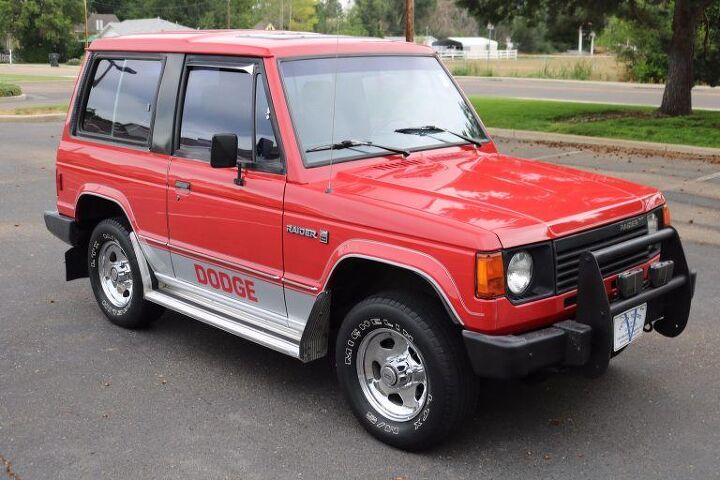
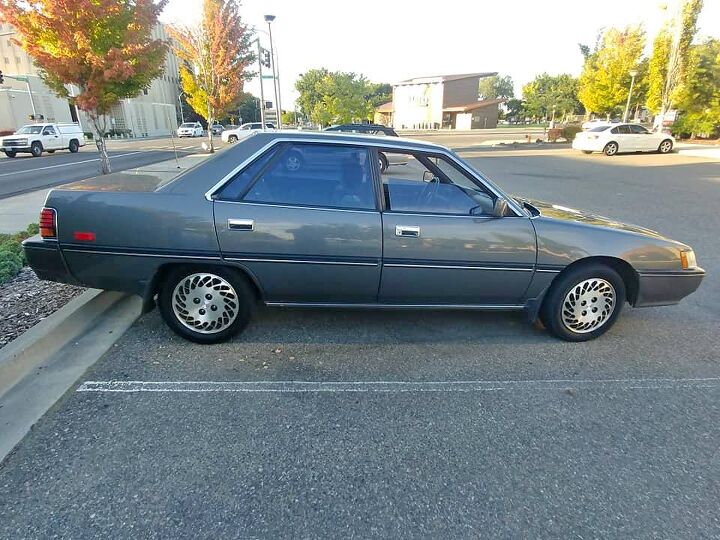
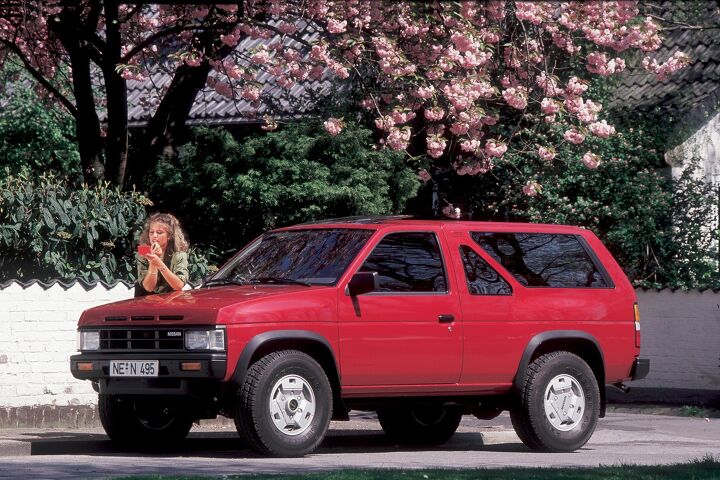
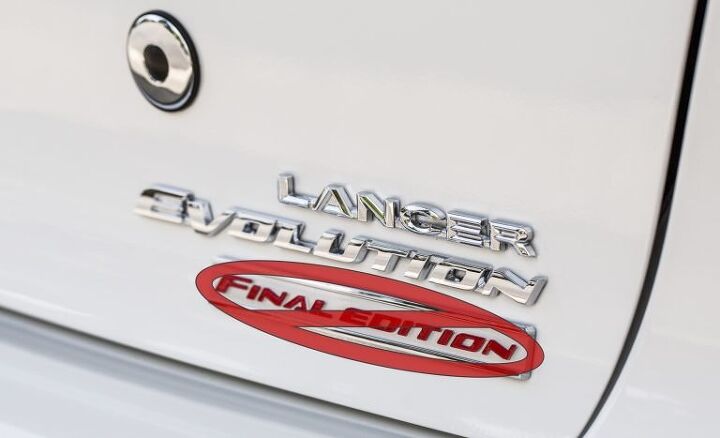



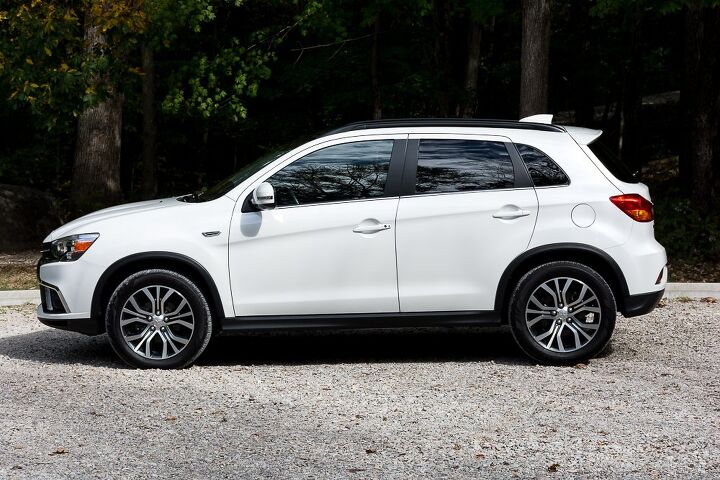


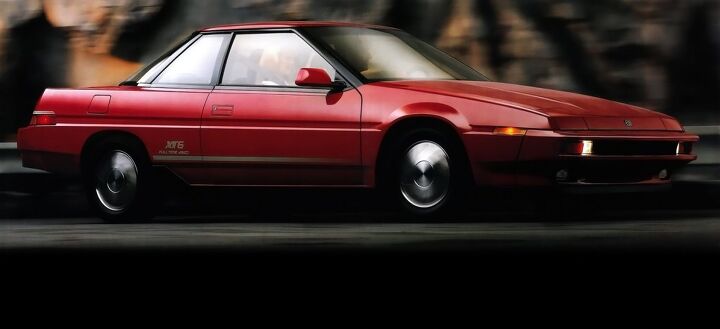
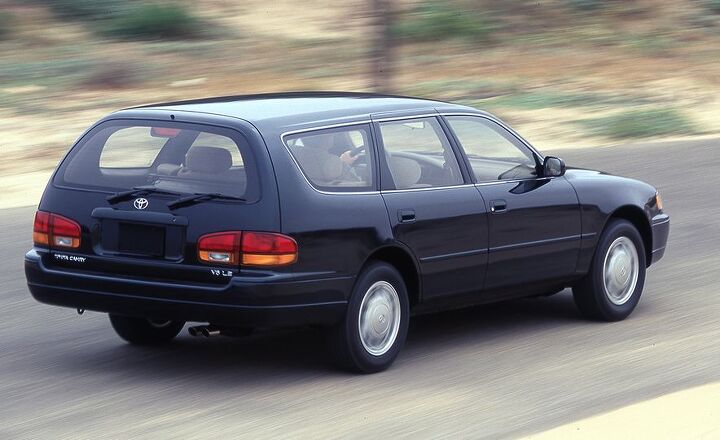



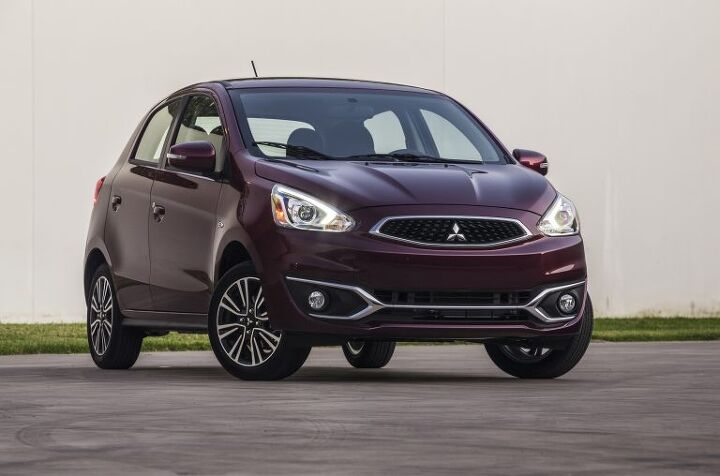
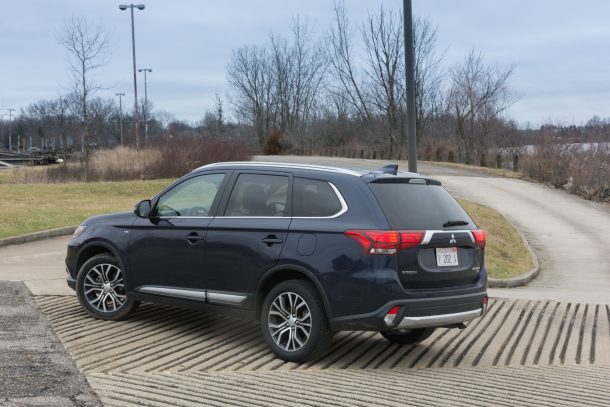
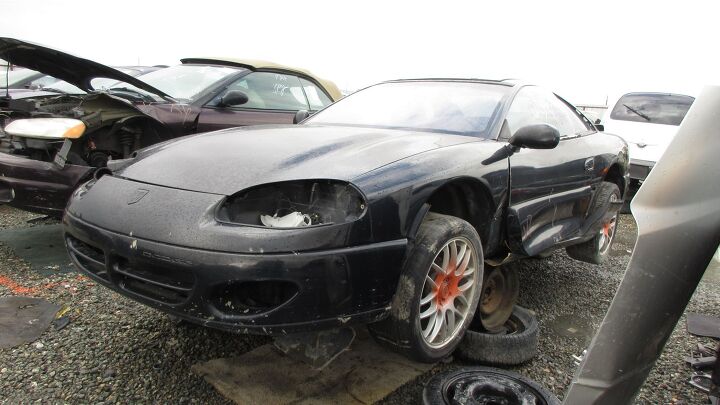

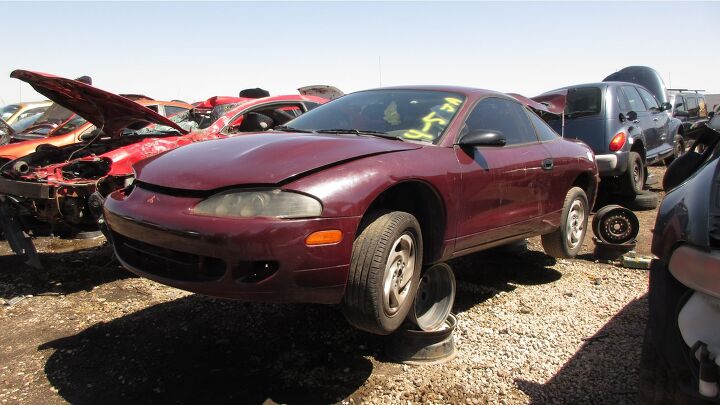


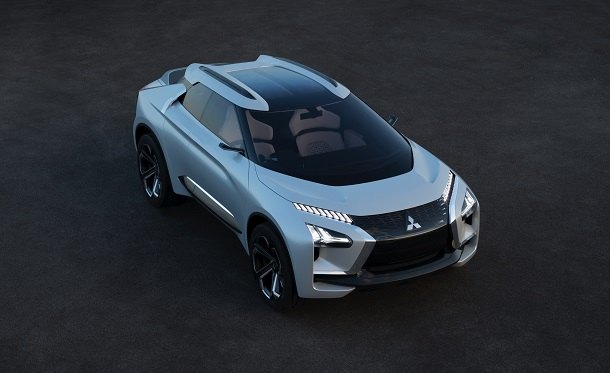
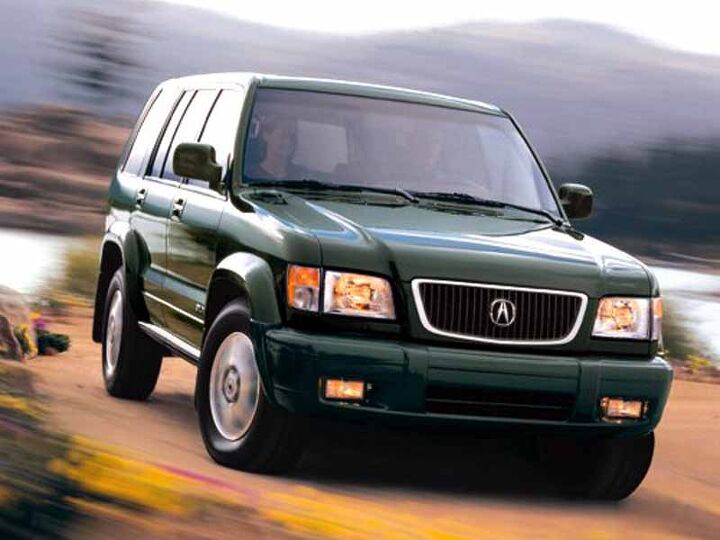


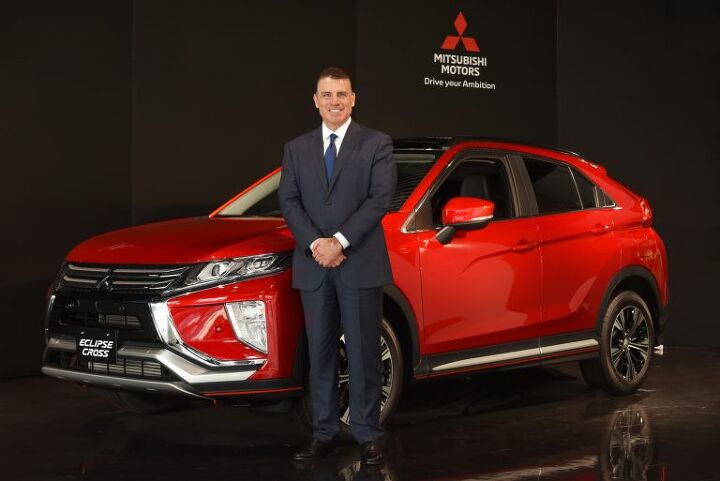


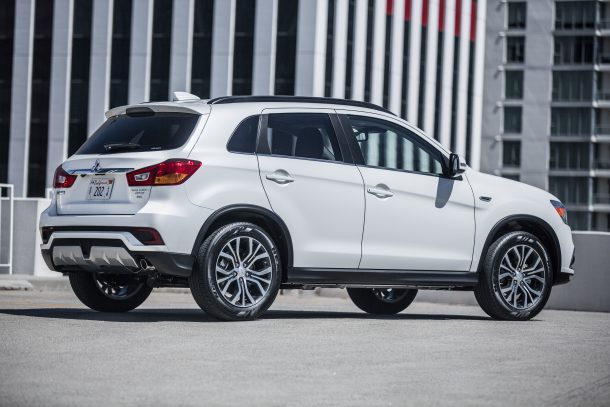
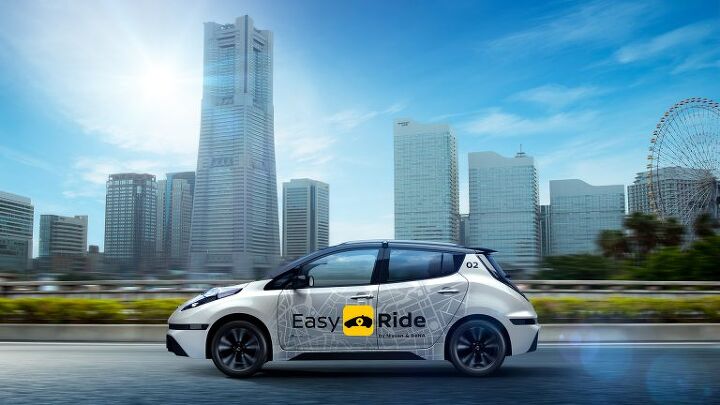
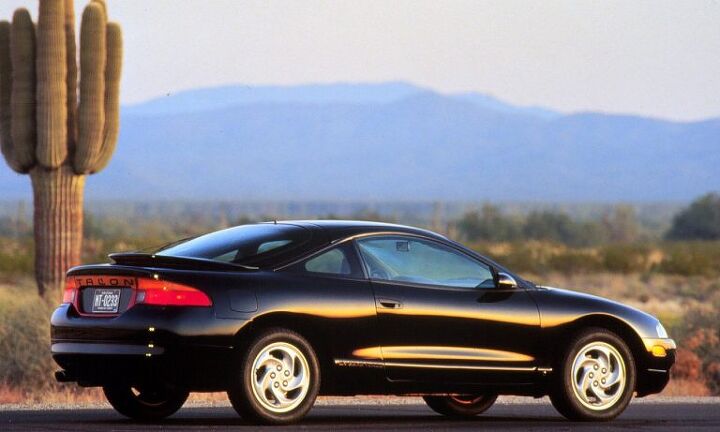

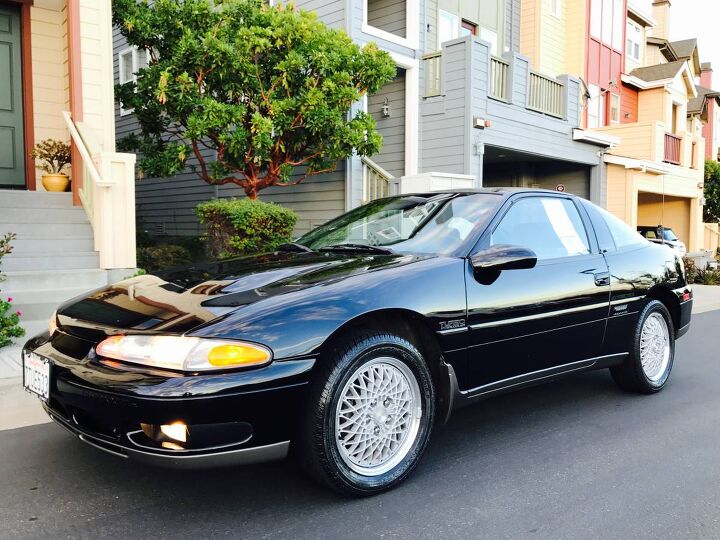

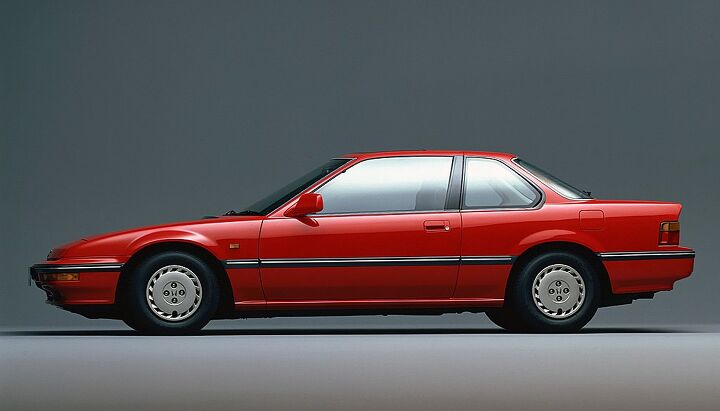
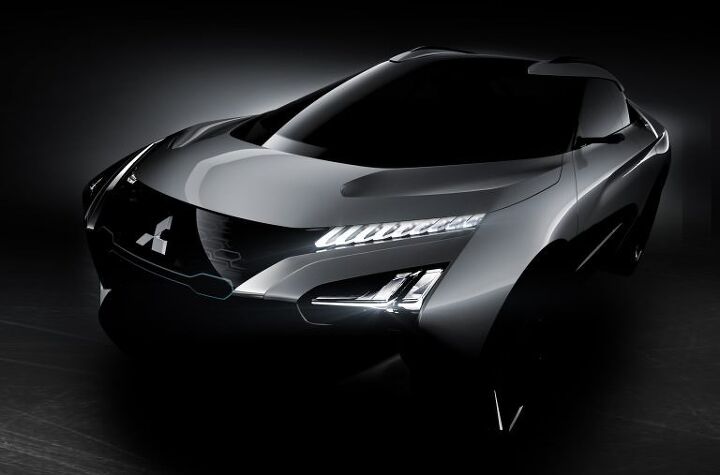
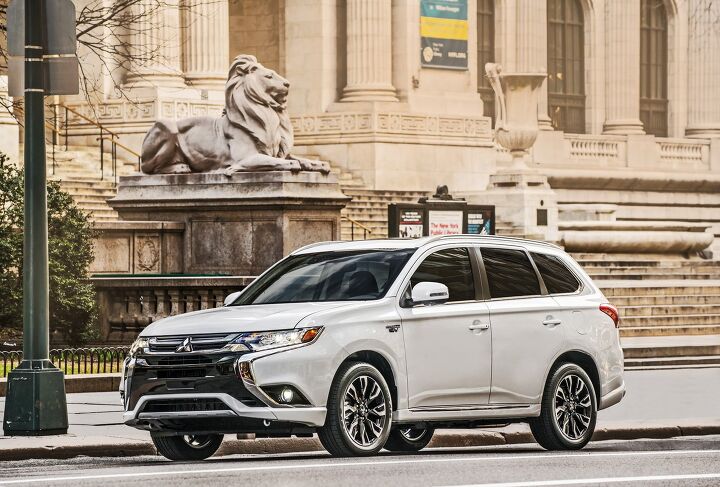
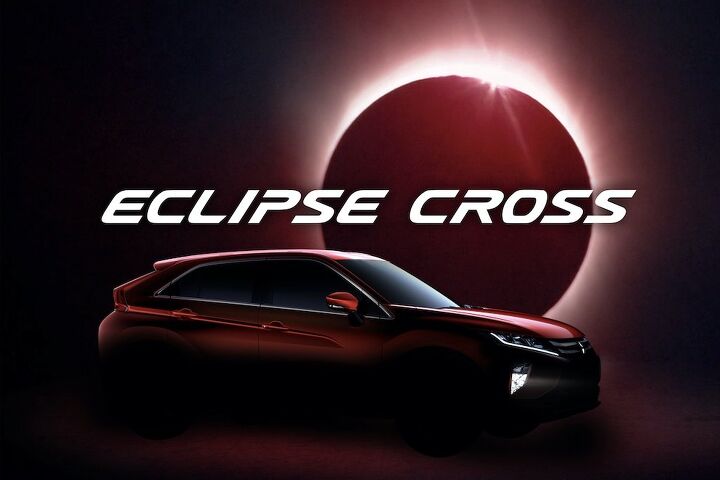

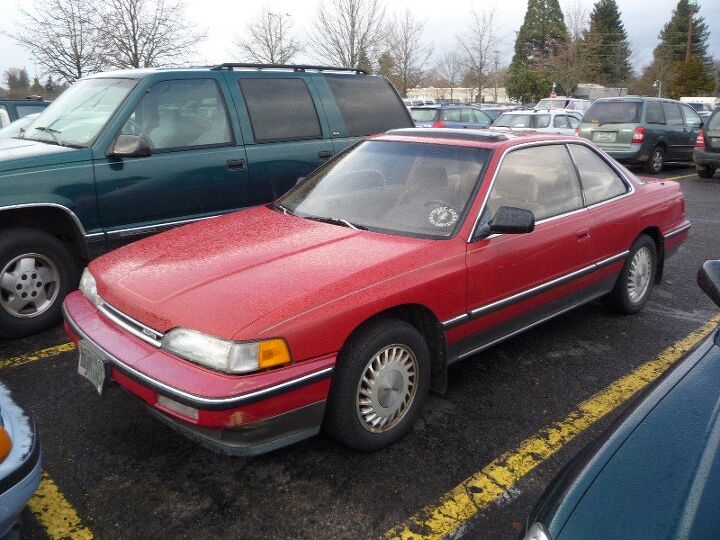

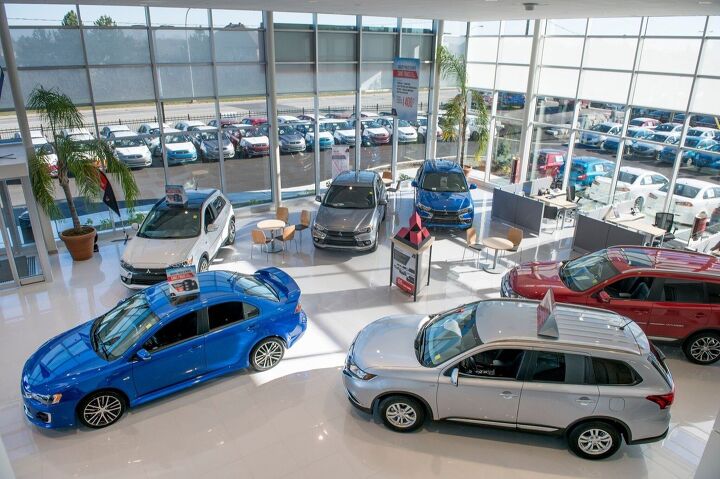


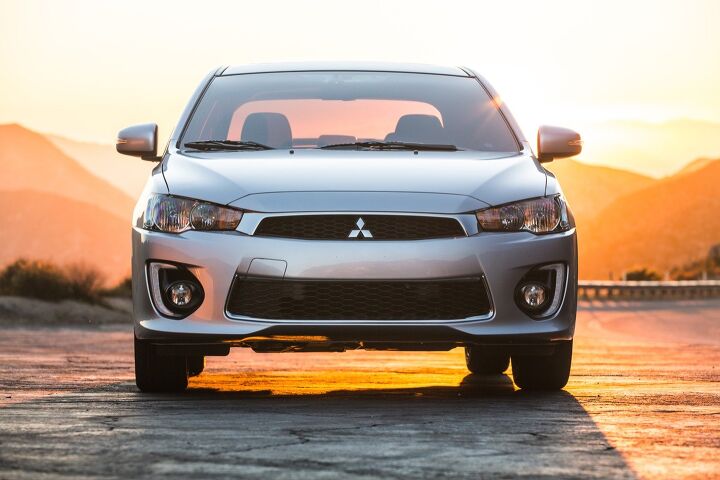
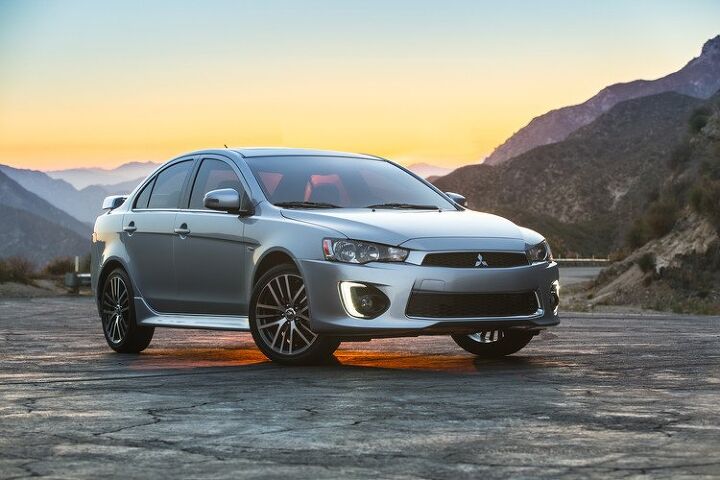


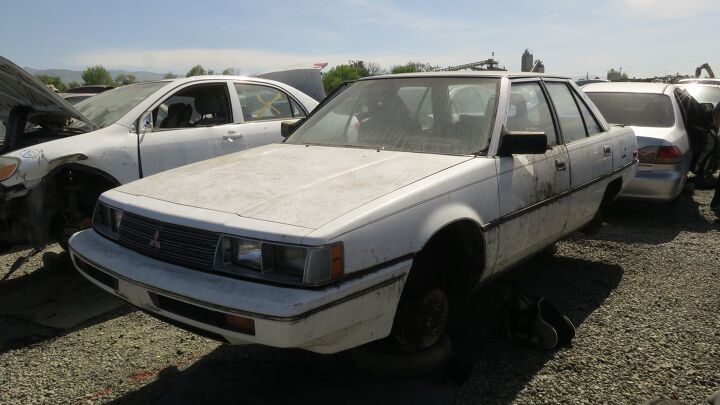
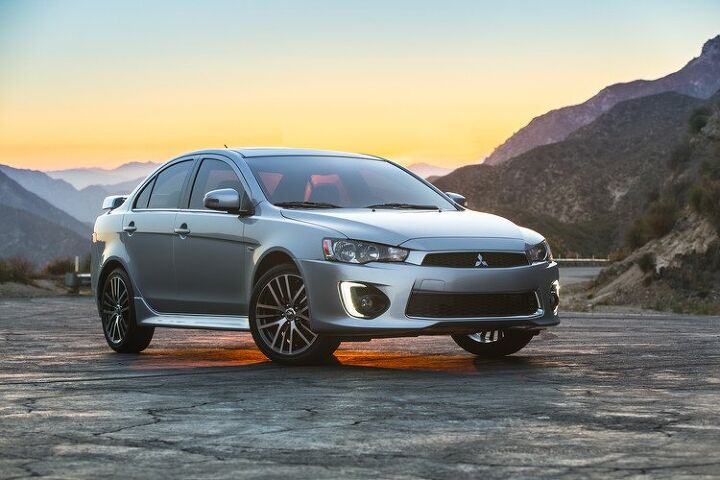













Recent Comments